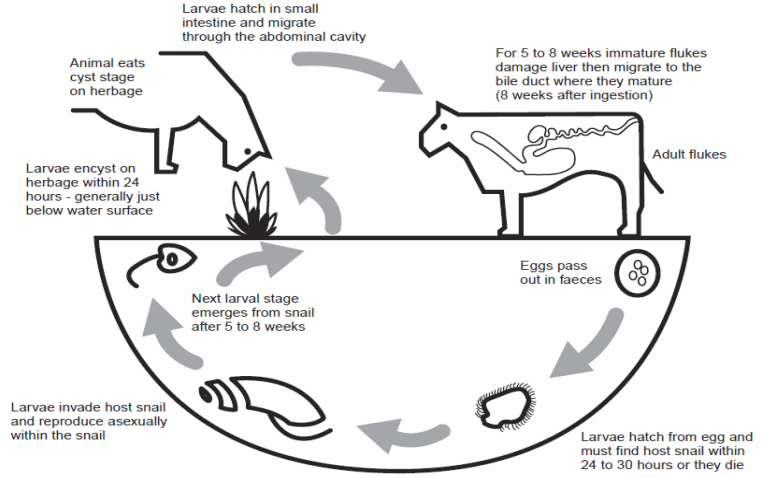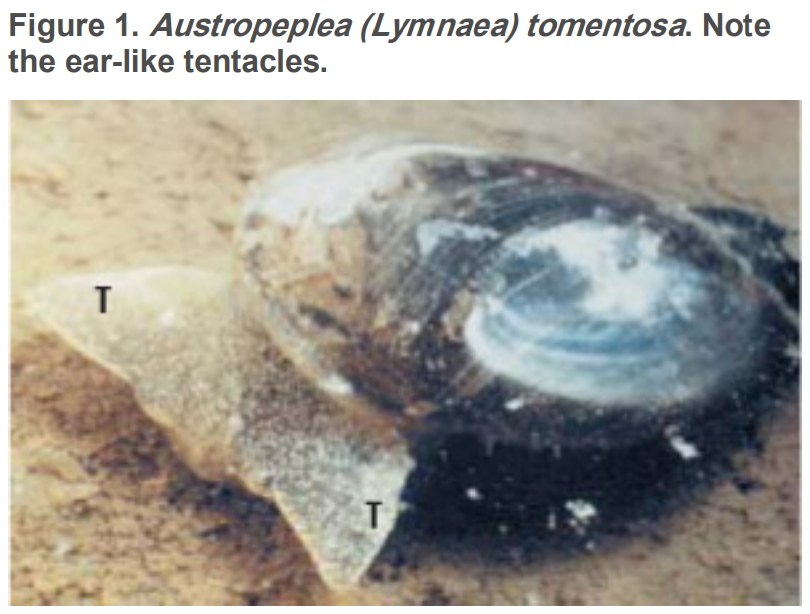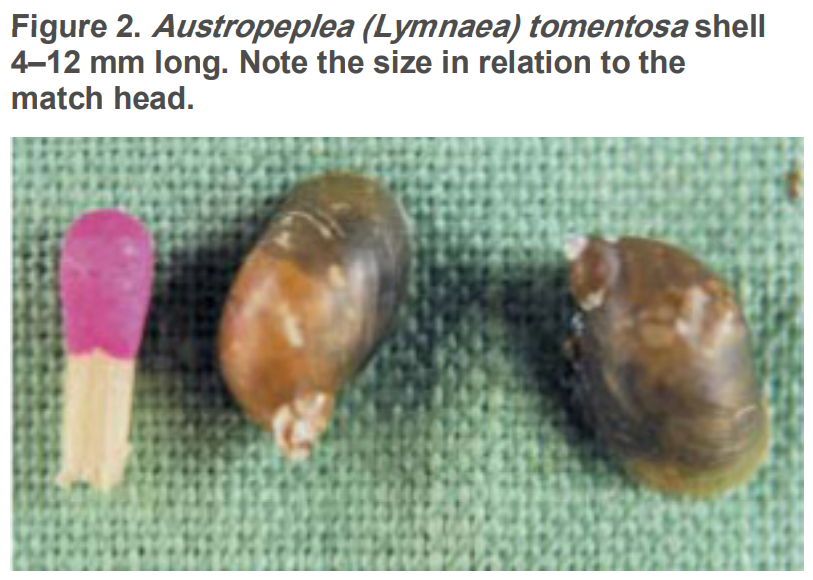What is Liver Fluke?
Liver fluke (Fasciola hepatica) are large flat leaf shaped worm parasites that can infect cattle, sheep, goats and other animals including humans, making it a zoonotic disease. Liver fluke usually occurs in areas with high rainfall (more than 600mm) and irrigated areas of eastern Australia.
Lifecycle of Liver Fluke
The lifecycle of liver flukes require two hosts: a small freshwater snail and the final host (cattle, sheep, goats, etc.).
There are three host snails present in Australia:
- Austropeplea (Lymnaea) tomentosa (most common)
- Pseudosuccinea (Lymnaea) columella
- Radix viridis
The snails are found on the edges of slow-moving creeks, swamps, springs or shallow irrigation channels and they can survive in mud when water flow temporarily stops.
Adult liver flukes live in the bile duct and produce eggs in the bile duct, which are then passed with the final hosts’ faeces. When average daily temperatures are over 10°C and pastures are wet, the larvae hatch and invade a freshwater snail (most commonly the Lymnaea tomentosa). The larvae multiplies within the snail and when they reach the final infective stage, they latch onto vegetation waiting to be ingested by grazing stock taking them to the small intestines.
The immature flukes then leave the gut and migrate through the liver for 6-7 weeks causing damage and subsequent scarring. At about 8-10 weeks after ingestion, the now fully mature adult liver fluke starts the cycle all over again.
Adult cattle generally develop a solid immunity to parasites (worms and fluke) by two years of age and under normal circumstances cows do not require treatment. However, sheep remain highly susceptible to fluke infection all their lives and can live in a sheep for many years.
The Effects of Liver Fluke
Liver fluke disease can be acute, sub-acute or chronic, depending on the size of the infection and how quickly it is acquired.
- Acute fasciolosis: Can cause death, with or without abdominal pain, jaundice (yellow discolouration of skin, whites of eyes and body fluids) and anaemia.
- Sub-acute fasciolosis: Jaundice, ill thrift (when stock grow at a slower growth rate than expected, given their feed allocation), anaemia, and possibly death after several weeks.
- Chronic fasciolosis (the most common form): Slowly developing clinical signs include anaemia, loss of appetite, and ‘bottle jaw’.
These symptoms contribute to millions of dollars lost in production costs, stock deaths, and costs of treatment and prevention each year. Other significant losses include:
- Reduced production and quality of wool reduced lambing percentages
- Poor growth rate of lambs
- Increased costs for replacement stock
- Reduced production and quality of milk in dairy cattle
- Lower growth rates and lower feed conversion rates in fattening cattle
Liver fluke make sheep more susceptible to black disease (an acute and fatal liver disease of ruminants). However, black disease is preventable with a 5-in-1 clostridial vaccine.
Treatment
Testing for liver fluke can be done using the dung samples sent to a lab. A fluke test, which uses a different method to that used for roundworms, must be specifically requested and will show if liver fluke is present and to what extent. If you’re unsure, test twice a year (late summer and winter) for at least two years (i.e. 4 tests).
Adult cattle generally develop a solid immunity to parasites (worms and fluke) by two years of age and under normal circumstances cows do not require treatment. However, sheep remain highly susceptible to fluke infection all their lives and can live in a sheep for many years.
Liver fluke is best prevented by a combination of strategic flukicide use and grazing management. To do this, you should consider the following:
- Provide clean water troughs that are free from snails as an alternative to dams, swaps and drains
- Monitor the fluke status of livestock using either faecal samples to check for fluke eggs, an antibody test using blood samples, or reports on liver condemnations of animals sent for slaughter
- Strategic Drenching (Typically 3 times a year)
- Drench all animals with a triclabendazole based flukicide that come from a liver fluke area and keep them in a quarantine paddock for 21 days
- Fence ‘flukey’ areas to prevent access by livestock
All flukicides are subject to the development of resistance. A simple method of checking for resistance is to take dung samples for a fluke egg count on the day of treatment, then again 30 days after treatment. In winter, there should be no eggs in the dung samples. Rotation through different flukicides will aid in managing the development of resistance.

Further Resources
DPI NSW
WormBoss
Meat & Livestock Australia – Liver fluke
Animal Health Australia – Liver fluke PDF
To find out where to send your dung samples for testing in Victoria, see WormCheck Australia.
Click here to download a PDF version.
For further information, please contact the VFF Livestock Group on 1300 882 833 or by email stocksense@vff.org.au
Disclaimer: All care is taken in the preparation of the information and published materials produced by the Victorian Farmers Federation (VFF) including but not limited to errors, defects or omissions in the information provided. VFF does not make any representations or give any warranties about the accuracy, reliability, completeness, or suitability for any particular purpose in the preparation of the information and published materials. This publication is intended for general information purposes only and does not constitute financial, legal, investment, production, or marketing advice. To the maximum extent permitted by law, the VFF and all persons acting on behalf of the VFF in preparing documents, are excluded from all and any liability for any loss or damage of any kind arising in relation to this publication including any reliance on the information contained herein.



